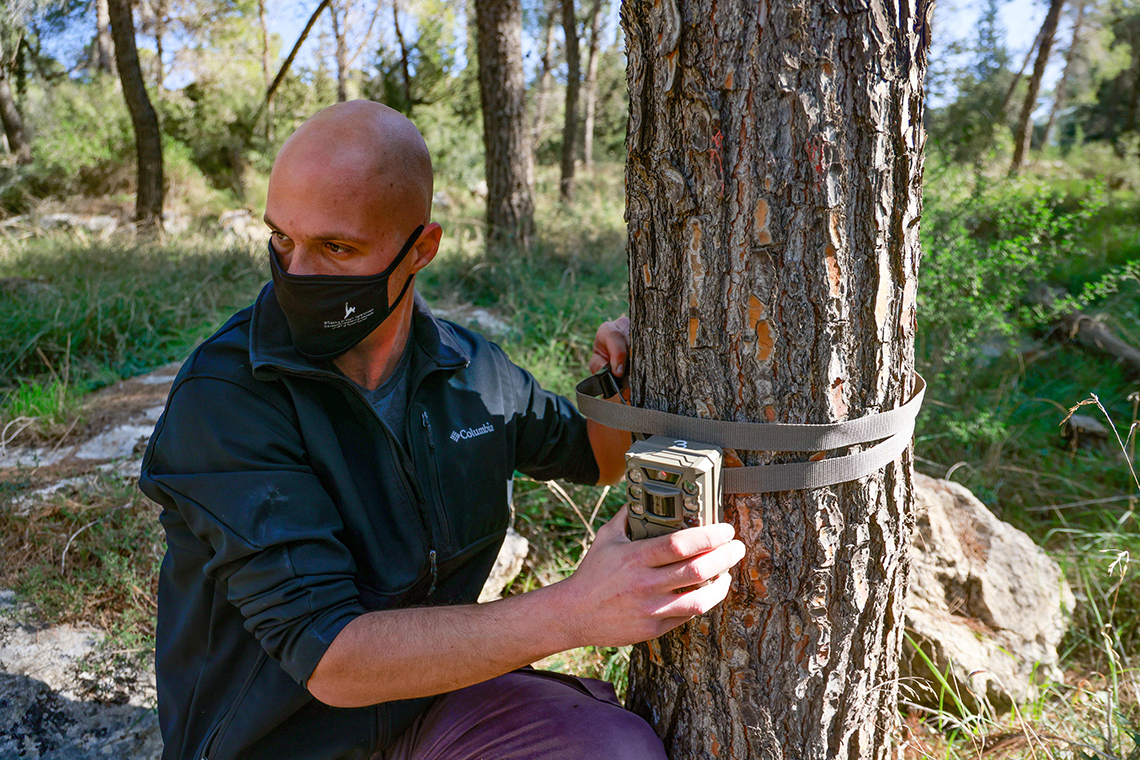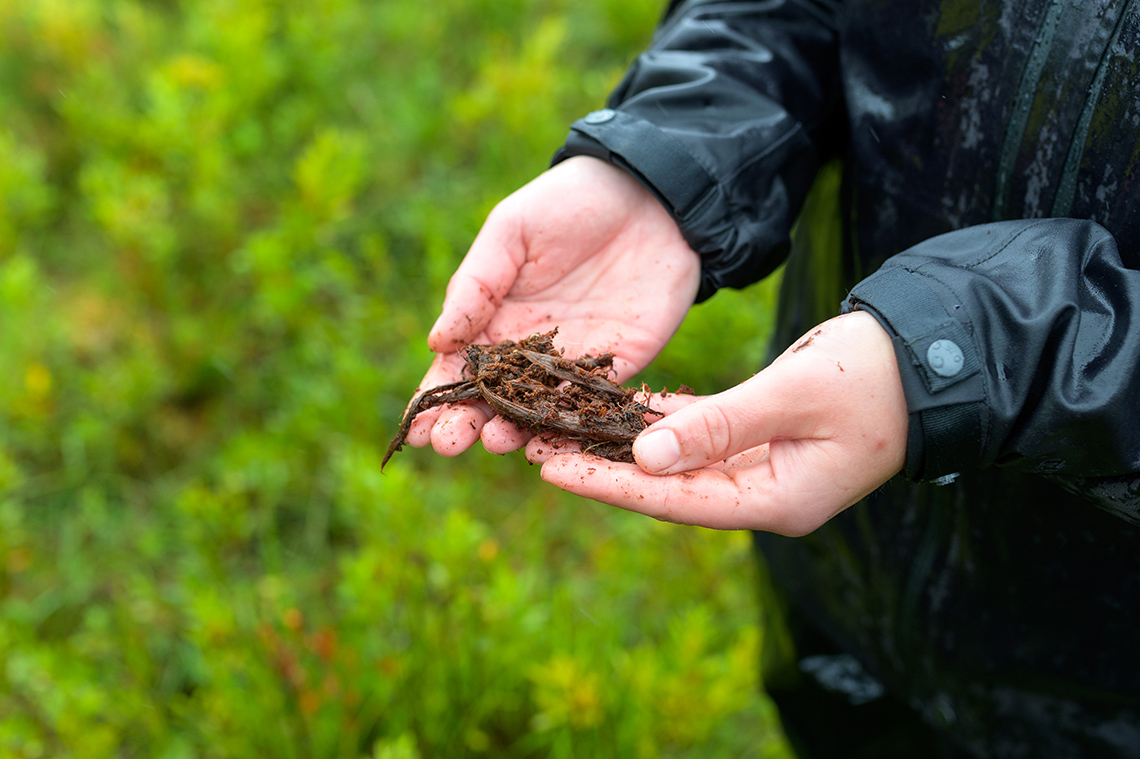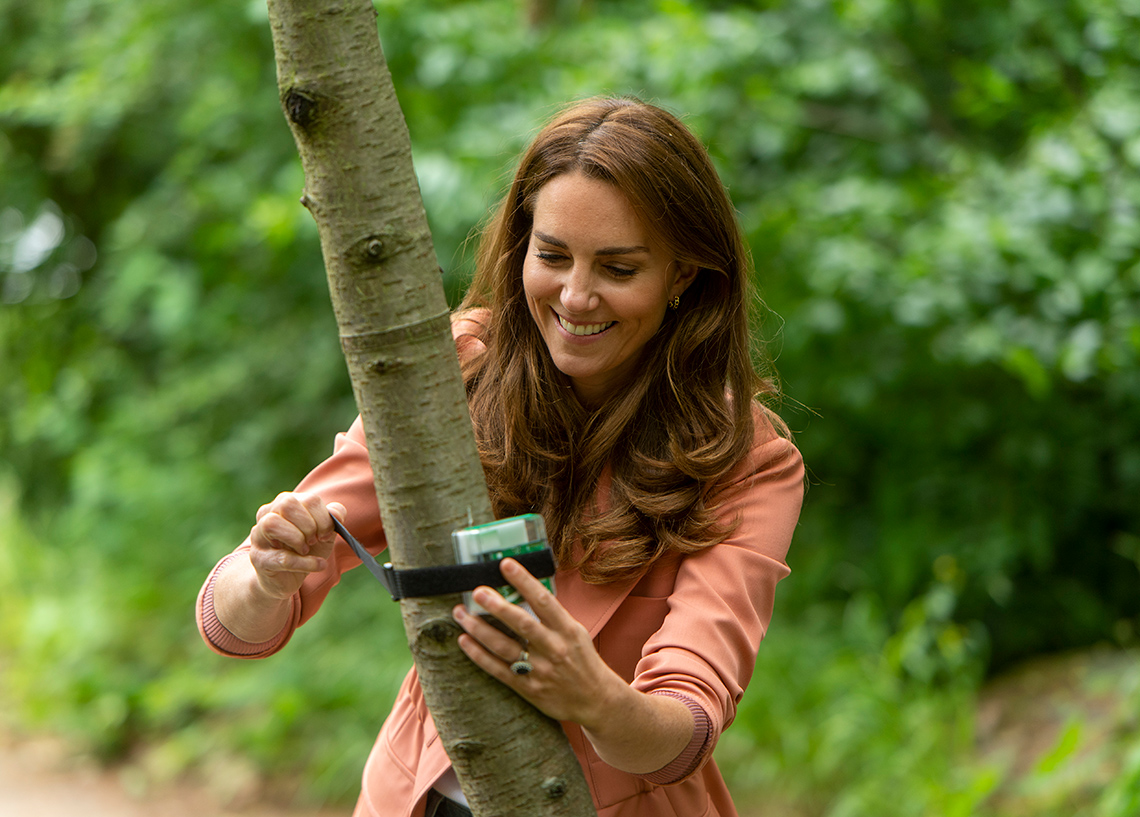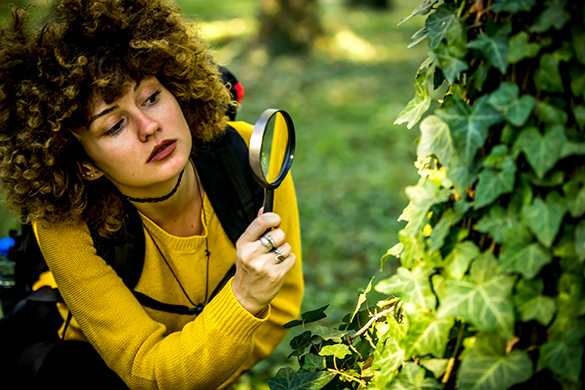Minds On
On Earth
Scientists and researchers are always exploring, investigating, and gathering new information. This information is analyzed and used to further knowledge, detect trends or concerns, and create innovations.
Think about the information that is available about the Earth, including its oceans, lakes, rivers, parks, forests, etc.

Brainstorm
Brainstorm
- How do you think scientists and those working in other areas of study gather all the information that we know about the Earth?
- What technologies do you think might be used?
Record your ideas in a notebook or another method of your choice.
If possible, share and compare your brainstorm with a partner.
Action
Innovation in Canada
This learning activity features emerging technologies, STEM contributions, and Canadian innovations that are making a difference.

Conservation
Conservation is a careful preservation and protection of something such as natural resources, wildlife, and the environment.
Press the following tabs to access some examples of emerging conservation technologies.
The Royal Botanical Gardens Fishway is protecting native species and their wetland habitats. The Fishway is located at the mouth the Desjardins Canal, where Cootes Paradise Marsh flows into the Hamilton Harbour.
Aquatic Ecologists at RBG Fishway open the fishway between March and October to allow fish to have access to their spawning grounds. Spawning grounds are the places where fish release their eggs. The fishway is designed to exclude Common Carp, an invasive species that destroys wetlands.
The fish swim naturally into baskets and then are released into a holding tank where they are sorted by species. The aquatic ecologists send the carp back to the harbour and allow the other fish through to spawn in the marsh. Some fish are held in a holding tank to gather data or further information, such as weight and overall health.
The main goal of this initiative is to restore the habitat wetlands in the marsh.

Camera traps are one innovative technology that has connected humans to the natural world.
These cameras were originally designed with “trip wires” that triggered the camera to take a photograph when a subject passed in front. With new technologies emerging, these cameras are now developed to be strapped to trees or mounted on rocks, making them more useful across a wide variety of terrains.
Innovative cameras can be powered by solar energy. They are created to withstand weather conditions such as heat, rain, wind, and cold. They include modernized motion sensors that trigger the camera when a subject passes in front of them.
Science coordinators all over the world use camera traps to measure the variety of species in specific habitats, which helps inform conservation efforts, and to monitor species in particular areas.

Conservatory scientists are applying tools that use coding language, such as remote sensing, in the form of drones, to inform and guide conservation.
Drones have been used to map out wetlands, survey habitats, and monitor water quality. As technology advances, drones are getting smaller, making them more equipped for these discoveries. They are also becoming less expensive.

The forested peatlands of the Boreal Forest are a plant-filled ecosystem. This peatland has the ability to lower the level of carbon dioxide that is in the atmosphere. Peat is a thick, soil-like build-up of partially decayed plants, and is the largest natural storage of carbon. In the Boreal Forest, the peatlands get less sunlight, which protects the plants from decomposing, creating a self-sufficient system for capturing and storing carbon.
Forested peatlands are creating an alternative model of conserving an ecosystem, as well as fighting climate change.
Artificial peatlands are being created by scientists to combat climate change and conserve ecosystems.

An emerging field of scientific research is called bioacoustics. Bioacoustics is a field that studies an ecosystem by capturing the sounds of the environment. Researchers set up microphones and recording devices to listen to the natural, uninterrupted sounds of birds, insects and animals to study them and the overall ecosystem that they live in.
This emerging technology practice allows bioacoustics researchers and conservationists to identify species and measure the variety of life in an ecosystem or habitat to be able to test the health of an ecosystem. It allows them to gather evidence to see if conservation efforts that are currently being used are working.

The Duchess of Cambridge, Kate Middleton, attaches a bioacoustics device to a tree to capture the sounds of the forest for a study.
Source: Hausheer, J. E. (2018, February 28). How can bioacoustics help conserve biodiversity? Cool Green Science. Retrieved February 11, 2022, from https://blog.nature.org/science/explainer/how-can-bioacoustics-help-conserve-biodiversity/
Learning check!
Select the correct answer, then press ‘Check Answer’ to see how you did.
Student Success
Think
How can these emerging technologies positively impact the ecosystems in the surrounding environments?
Which of these emerging technologies do you feel can make a significant impact on the environment on a larger scale? Why?
Record your ideas in a notebook or another method of your choice.
Career exploration
As you were exploring emerging technologies in conservation, you may have noticed related careers, such as:
- aquatic ecologist
- bioacoustics researcher
- conservatory scientist
- peatland restoration officer or scientist
- science coordinator

Investigate
Investigate
Choose one of the previously listed careers to investigate further and respond to the following questions:
- What are the daily tasks of this career?
- What education is required for one of these careers?
- How is this career helping the environment?
- How are they focusing on conservation?
- Is this a career you would be interested in doing? Why or why not?
Explore this video to learn about the steps of the Scientific Research Process.
For this activity, you will be focusing on the “research, record, and analyze” parts of the process.
Press ‘Hint’ to access additional details.
You may use wildlife and conservation websites and organizations to help with your investigation.
Complete the Conservation Career Activity in your notebook or using the following fillable and printable document. If you would like, you can use speech-to-text or audio recording tools to record your thoughts.
| Conservation Career | |
|---|---|
|
1. What career did you research? |
|
|
2. What daily tasks are involved? |
|
|
3. What education is required? |
|
|
4. In what ways does this career help the environment? |
|
|
5. In what ways does this career focus on conservation? |
|
|
6. Is this a job you would consider doing? Why or why not? |
|
Press the ‘Activity’ button to access Conservation Career Activity.
Consolidation
Making connections

For this section of the learning activity, we will be exploring two tasks.
Press the following tabs to access the various tasks.
In a natural area in your local community, it has been decided that one of the important ecosystems has been flagged as being potentially harmed.
Which emerging technology (that was discussed in this learning activity) would you suggest if the ecosystem is:
- a water ecosystem
- a forest ecosystem
Why would you choose that technology? What information could the technology tell you? What would you want to find out?
Record your ideas in a notebook or another method of your choice.
Use what you have learned about a career in conservation to make an announcement offering support to a local community.
- What area of the community could you offer your support to?
- How can you support the community with their conservation efforts in this location?
You may record your announcement for the community in a format of your choice (a letter, a video announcement, an audio announcement, a visual announcement using the computer or paper, etc.).
Reflection
As you read the following descriptions, select the one that best describes your current understanding of the learning in this activity. Press the corresponding button once you have made your choice.
I feel…
Now, expand on your ideas by recording your thoughts using a voice recorder, speech-to-text, or writing tool.
When you review your notes on this learning activity later, reflect on whether you would select a different description based on your further review of the material in this learning activity.